I first saw the ancient Roman Forum (Forum Romanum) from a Segway bike. I looked up from the cobblestones as our tour guide gathered us together, and there it was – the scene so often painted by Grand Tour visitors from the C17th and C18th. Stretching out beneath us, stood the triple columns of the Temple of Castor and Pollux – almost opposite the site where Julius Caesar was killed. Over there in the upper left was the arch of Septimus Severus (not to be confused with the teacher at Hogwarts), and the column of Phocus. I adjusted my camera lens, trying to take in the scene. I could picture this place, filled with bustle and dust and the smell of cooking and olive oil and wine. Our guide invited us to look at the topography. The Forum was located in a swampy basin prone to floods – not a space you would associate with the cradle of Western civilization.
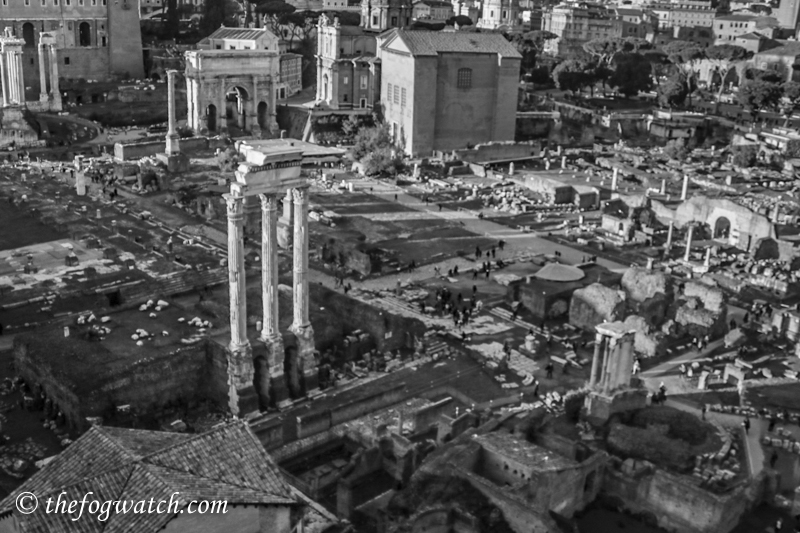
Coming from an immigrant family, inheriting great wealth and seeking political office with the promise to ‘Drain the swamp’ – Tarquin the Elder (legendary fifth king of Rome) was not speaking of his political adversaries, but an actual swamp – that was to become the political centre of ancient Rome. Clearly, he could see the potential when those closest to it could only see it as a festering, breeding ground for mosquitoes, pestilence and death – it was a burial ground for the villages upon the surrounding hills. That was the scene in the C7thBCE.
Key to the construction of the Forum was the Cloaca Maxima – an enormous sewer built to drain the Velabrum stream into the nearby Tiber River. What began as an open canal, was later paved over, improving public health and providing a wide square or plaza with space for a market surrounded by large public buildings.
By the C1st AD the eleven aqueducts that brought water into Rome – to provide for public drinking water, baths and fountains – ultimately drained into the Cloaca Maxima and kept the sewer flushed out. The system was well maintained throughout the period of the Roman Empire, and even today it still drains rainwater and rubbish from the site.
The truly vibrant period of expansion in Rome came from plunder out of the Punic Wars in the C3rd-2nd BCE when Rome had spread its rule over much of the Mediterranean, and from trade extending to the Middle East and beyond. All this led to a confluence of ideas and monumental architecture befitting the seat of empire.
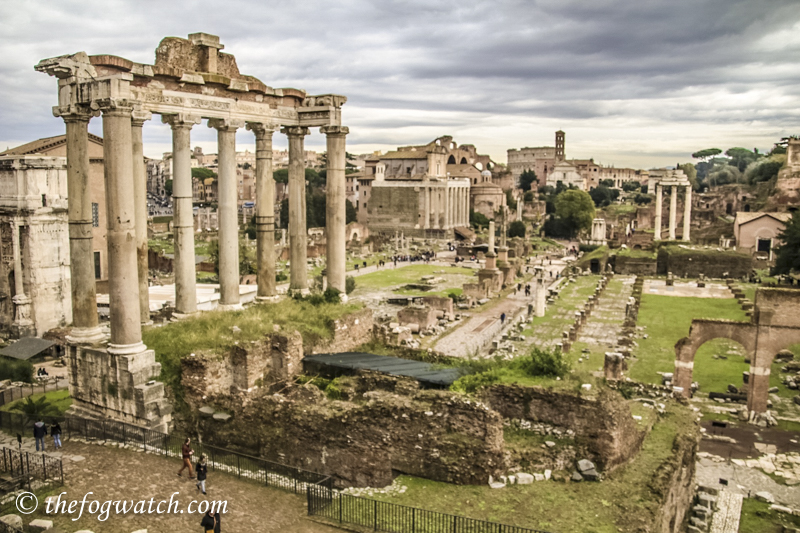
What you see today as a well excavated archaeological site, once brought together Roman citizens, lawmakers, senators and emperors. But in the C17th it was encountered by Romantic Grand Tour travellers as farmlands with extraordinary architectural elements projecting out from the soil of a filled-in valley.
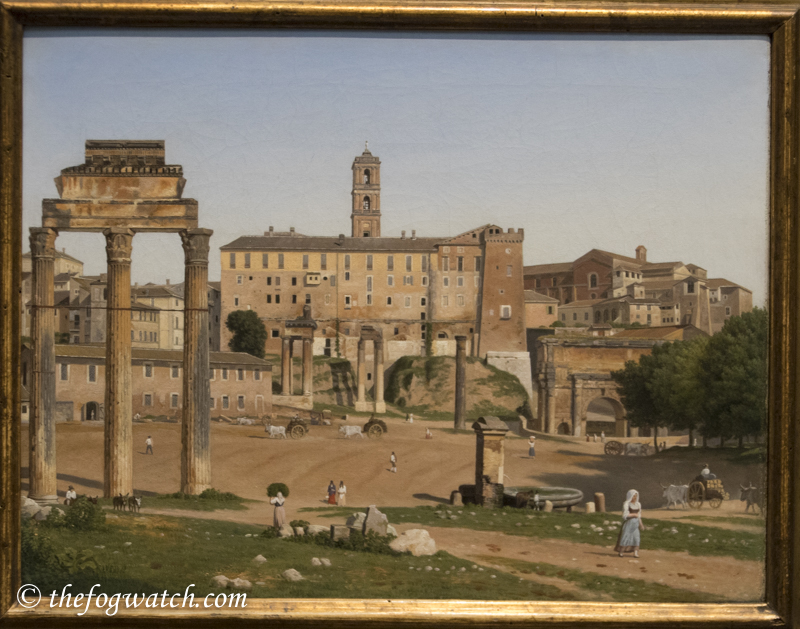
Today, in your mind’s eye, it is easy to visualise the majestic buildings and bustling marketplaces. A meeting place of cultures and value systems to be debated and negotiated in ways that continue to influence our Western political and economic systems. It was the scene of triumphal processions, public speeches and elections. Here, the idea of the Senate was born, as was the Republican Movement. It was a marketplace and a law court, and a Gladiatorial sports centre. It was both a sacred and a profane place, but above all, it gave people a voice and a say in how they were governed. No wonder more than 4.5 million people visit the place each year!
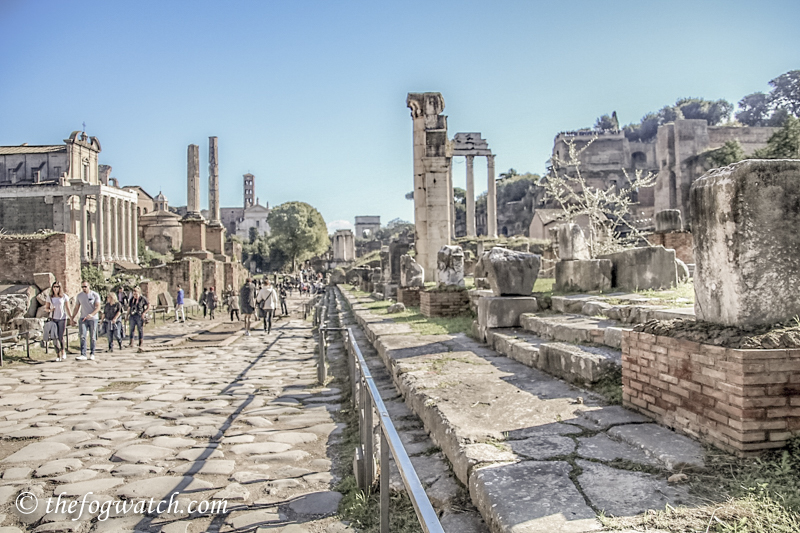
These days, we still use the word Forum to mean a kind of meeting place – including online – which brings together people from all backgrounds and cultures to exchange ideas, and buy and sell. It’s extraordinary to think that a 2000-year-old site embodying a Roman ideal of community – still resonates throughout the contemporary worlds – both real and virtual.
****************************
If you’d like to read more about our Camino Frances in 2016 and 2018, visit the index page here for all my Camino posts
or click on the link above 🙂
****************************
Why not have these posts delivered to your inbox? Just enter your email address and click the ‘subscribe’ button in the left margin, and don’t forget to respond to the confirmation email in your inbox 🙂

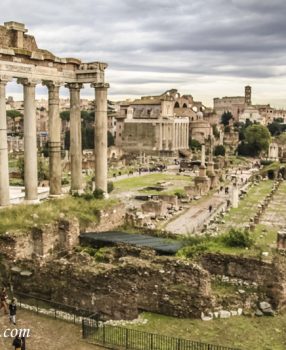
Most interesting post.
Thanks Maureen – much appreciated
A very nice article! Thank you!
Thanks Juliana!
Thank you, Jerry, so interesting to read how you write it!
Thanks Anneliese – I’m glad you enjoyed it 🙂